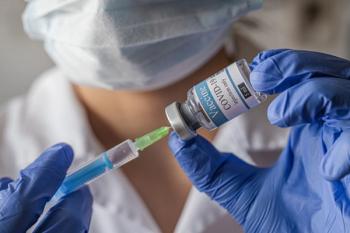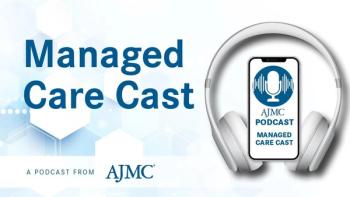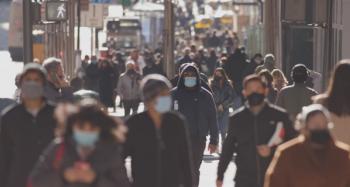
COVID-19
Latest News
Latest Videos

CME Content
More News

Long-term effects of COVID-19 include lingering symptoms that take months to improve, more severe illness for cancer survivors, and a higher risk of death after infection for people living in rural areas.

Higher telemedicine adoption among Medicare beneficiaries was associated with a slight increase in total visits but a reduction in certain low-value tests and related spending.

The comparable rates of remission pre- and post-pandemic suggest that COVID-19 did not negatively impact the outcomes of patients with ovarian cancer.

During the unwinding of continuous Medicaid provisions, 8.7% of pediatric patients at community-based health organizations became uninsured, with higher rates among older children, females, and those with chronic medical conditions.

Although long-term nursing home stay or death decreased before the COVID-19 pandemic, the trend slowed during the pandemic across all racial and ethnic groups.

Patients who revisit the emergency department shortly after discharge are at high risk for complications and death, exacerbated by COVID-19 screening workload. Detection efforts impact outcomes.

Patients with multiple myeloma (MM) can experience diminished immune responses during prolonged treatment; however, mRNA vaccines could bolster immunity in this vulnerable population.

Acknowledging the disparity in pulse oximetry implicates a $2 billion industry that has faced stricter regulations in recent years in an attempt to address bias in the development and testing of these devices, the authors stated.

On this episode of Managed Care Cast, we speak with Jenny Han, MD, of Emory School of Medicine and Grady Hospital, about COVID-19, long COVID, and strategies for prevention and care.

Cognitive and behavioral techniques can improve physical function and overall well-being in patients with long COVID.

The 2023 National Health Interview Survey found that a significant portion of US adults experience post–COVID-19 condition, or long COVID, with some facing activity limitations.

As the holidays approach, experts recommend tips to reduce the risk of COVID-19.

New research showed that the BNT162b2 XBB vaccine was capable of reducing hospitalizations and emergency department and urgent care visits due to COVID-19 in children aged 5 to 17 years.

Study finds no benefit of fluvoxamine in shortening COVID-19 symptom duration among mild to moderate cases.

COVID-19 infections were associated with greater risk of hospitalization, complications, and mortality in patients with peripartum and hypertrophic cardiomyopathy.

Severity of a COVID-19 illness could be determined by examining autoantibodies in the nasal cavity, allowing more personalized treatment protocols.

A presentation at the National Community Pharmacists Association Annual Meeting and Exposition focused on the latest on COVID-19 vaccination.

In the current landscape of vaccine skepticism and misinformation, it is important to understand the full impact of long COVID on quality of life, especially among vulnerable populations.

The COVID-19 pandemic required an evolution of traditional nursing practices, but the unpredictability led to increased stress, burnout, and job dissatisfaction.

A study from the American Society of Hematology (ASH) Research Network reports positive antibody response and tolerability after mRNA vaccination in people with sickle cell disease.

Rising COVID-19 cases are attributed to travel, heatwaves, and new variants; an analysis highlights challenges in states not expanding Medicaid; the FDA notes health risks despite marketing authorization for popular e-cigarettes.

Over the course of the pandemic, the risk of developing long COVID after a COVID-19 infection decreased, largely due to vaccination.

Payer costs for COVID-19 ranged from a mean of $505 for asymptomatic cases to $126,094 for severe cases with post–COVID-19 condition.

Development and Validation of the COVID-19 Hospitalized Patient Deterioration Index
The authors developed and validated an accurate, well-calibrated, easy-to-implement COVID-19 hospitalized patient deterioration index to identify patients at high or low risk of clinical deterioration.

A difference-in-differences analysis of health care claims data evaluated excess health care costs in the 12 months following COVID-19 diagnosis among the general and older adult populations.






















































